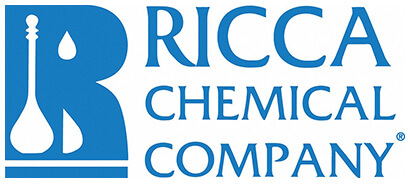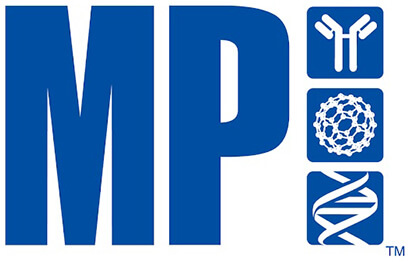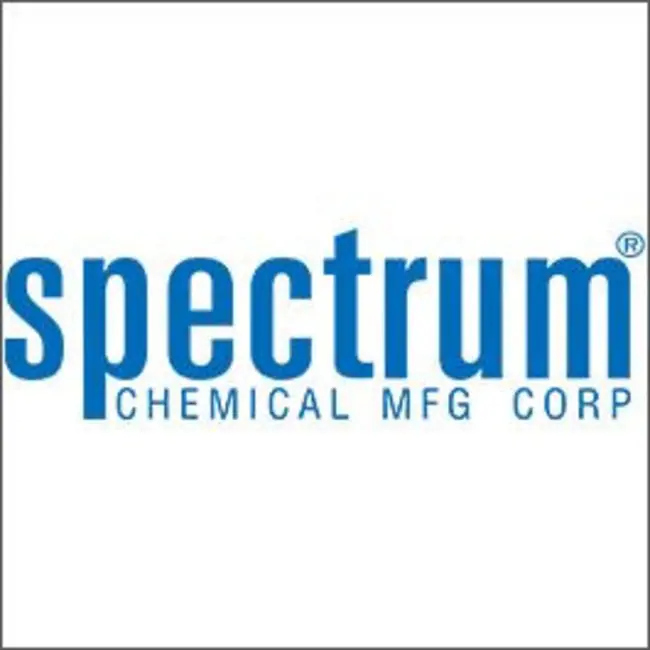Ambient
Showing 67851–67900 of 146505 results
-
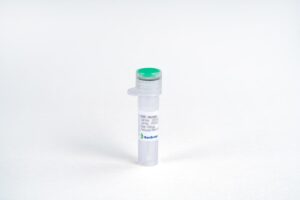
CD40L/CD154/TRAP, Human
$64.69 Add to cart View Product DetailsCD40 Ligand (CD40L/CD154/TRAP) is a membrane glycoprotein and differentiation antigen expressed on the surface of T-cells. The CD40 ligand stimulates B-cell proliferation and secretion of all immunoglobulin isotypes in the presence of cytokines. It also costimulates proliferation of activated T-cell and this is accompanied by the production of IFN-γ, TNF-α, and IL2. CD40 ligand has been shown to induce cytokine production and tumoricidal activity in peripheral blood monocytes.
-

CD40L/CD154/TRAP, Human
$159.56 Add to cart View Product DetailsCD40 Ligand (CD40L/CD154/TRAP) is a membrane glycoprotein and differentiation antigen expressed on the surface of T-cells. The CD40 ligand stimulates B-cell proliferation and secretion of all immunoglobulin isotypes in the presence of cytokines. It also costimulates proliferation of activated T-cell and this is accompanied by the production of IFN-γ, TNF-α, and IL2. CD40 ligand has been shown to induce cytokine production and tumoricidal activity in peripheral blood monocytes.
-
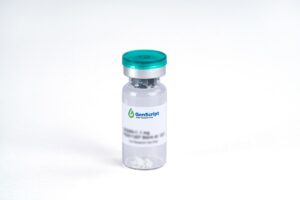
CD47 Fc Chimera, Human
$1,293.75 Add to cart View Product DetailsLeukocyte surface antigen CD47 is also known as Antigenic surface determinant protein OA3, Integrin-associated protein (IAP) and Protein MER6. CD47 contains 1 Ig-like V-type (immunoglobulin-like) domain. CD47 is a 40‑60 kDa variably glycosylated atypical member of the immunoglobulin superfamily and an integral membrane protein that consists of a 123 amino acid (aa) extracellular domain (ECD) with a single Ig-like domain, five membrane-spanning regions with short intervening loops, and a 34 aa C-terminal cytoplasmic tail. CD47 has a role in both cell adhesion by acting as an adhesion receptor for THBS1 on platelets, and in the modulation of integrins and plays an important role in memory formation and synaptic plasticity in the hippocampus by similarity. CD47 is the receptor for SIRPA, binding to which prevents maturation of immature dendritic cells and inhibits cytokine production by mature dendritic cells. CD47 Interaction with SIRPG mediates cell-cell adhesion, enhances superantigen-dependent T-cell-mediated proliferation and costimulates T-cell activation.
-

CD47 Fc Chimera, Human
$301.88 Add to cart View Product DetailsLeukocyte surface antigen CD47 is also known as Antigenic surface determinant protein OA3, Integrin-associated protein (IAP) and Protein MER6. CD47 contains 1 Ig-like V-type (immunoglobulin-like) domain. CD47 is a 40‑60 kDa variably glycosylated atypical member of the immunoglobulin superfamily and an integral membrane protein that consists of a 123 amino acid (aa) extracellular domain (ECD) with a single Ig-like domain, five membrane-spanning regions with short intervening loops, and a 34 aa C-terminal cytoplasmic tail. CD47 has a role in both cell adhesion by acting as an adhesion receptor for THBS1 on platelets, and in the modulation of integrins and plays an important role in memory formation and synaptic plasticity in the hippocampus by similarity. CD47 is the receptor for SIRPA, binding to which prevents maturation of immature dendritic cells and inhibits cytokine production by mature dendritic cells. CD47 Interaction with SIRPG mediates cell-cell adhesion, enhances superantigen-dependent T-cell-mediated proliferation and costimulates T-cell activation.
-

CD47, His, Human
$1,293.75 Add to cart View Product DetailsLeukocyte surface antigen CD47 is also known as Antigenic surface determinant protein OA3, Integrin-associated protein (IAP) and Protein MER6. CD47 contains 1 Ig-like V-type (immunoglobulin-like) domain. CD47 is a 40‑60 kDa variably glycosylated atypical member of the immunoglobulin superfamily and an integral membrane protein that consists of a 123 amino acid (aa) extracellular domain (ECD) with a single Ig-like domain, five membrane-spanning regions with short intervening loops, and a 34 aa C-terminal cytoplasmic tail. CD47 has a role in both cell adhesion by acting as an adhesion receptor for THBS1 on platelets, and in the modulation of integrins and plays an important role in memory formation and synaptic plasticity in the hippocampus by similarity. CD47 is the receptor for SIRPA, binding to which prevents maturation of immature dendritic cells and inhibits cytokine production by mature dendritic cells. CD47 Interaction with SIRPG mediates cell-cell adhesion, enhances superantigen-dependent T-cell-mediated proliferation and costimulates T-cell activation.
-

CD47, His, Human
$301.88 Add to cart View Product DetailsLeukocyte surface antigen CD47 is also known as Antigenic surface determinant protein OA3, Integrin-associated protein (IAP) and Protein MER6. CD47 contains 1 Ig-like V-type (immunoglobulin-like) domain. CD47 is a 40‑60 kDa variably glycosylated atypical member of the immunoglobulin superfamily and an integral membrane protein that consists of a 123 amino acid (aa) extracellular domain (ECD) with a single Ig-like domain, five membrane-spanning regions with short intervening loops, and a 34 aa C-terminal cytoplasmic tail. CD47 has a role in both cell adhesion by acting as an adhesion receptor for THBS1 on platelets, and in the modulation of integrins and plays an important role in memory formation and synaptic plasticity in the hippocampus by similarity. CD47 is the receptor for SIRPA, binding to which prevents maturation of immature dendritic cells and inhibits cytokine production by mature dendritic cells. CD47 Interaction with SIRPG mediates cell-cell adhesion, enhances superantigen-dependent T-cell-mediated proliferation and costimulates T-cell activation.
-

CD48/SLAMF2 Fc Chimera, Human
$1,035.00 Add to cart View Product DetailsCD48 antigen (Cluster of Differentiation 48) also known as B-lymphocyte activation marker (BLAST-1) or signaling lymphocytic activation molecule 2 (SLAMF2) is a protein that in humans is encoded by the CD48 gene. CD48 is a member of the CD2 subfamily of the immunoglobulin superfamily (IgSF) which includes SLAM (signaling lymphocyte activation molecules) proteins, such as CD84, CD150, CD229 and CD244. CD48 is found on the surface of lymphocytes and other immune cells, dendritic cells and endothelial cells, and participates in activation and differentiation pathways in these cells. CD48 was the first B-cell-specific cellular differentiation antigen identified in transformed B lymphoblasts.
-

CD48/SLAMF2 Fc Chimera, Human
$172.50 Add to cart View Product DetailsCD48 antigen (Cluster of Differentiation 48) also known as B-lymphocyte activation marker (BLAST-1) or signaling lymphocytic activation molecule 2 (SLAMF2) is a protein that in humans is encoded by the CD48 gene. CD48 is a member of the CD2 subfamily of the immunoglobulin superfamily (IgSF) which includes SLAM (signaling lymphocyte activation molecules) proteins, such as CD84, CD150, CD229 and CD244. CD48 is found on the surface of lymphocytes and other immune cells, dendritic cells and endothelial cells, and participates in activation and differentiation pathways in these cells. CD48 was the first B-cell-specific cellular differentiation antigen identified in transformed B lymphoblasts.
-

CD73, His, Human
$2,070.00 Add to cart View Product DetailsCD73, also known as ecto-5′-nucleotidase, is an enzyme that in humans is encoded by the NT5E gene.CD73 commonly serves to convert AMP to adenosine.The enzyme consists of a dimer of 2 identical 70-kD subunits bound by a glycosyl phosphatidyl inositol linkage to the external face of the plasma membrane. The enzyme is used as a marker of lymphocyte differentiation. A deficiency of CD73 occurs in a variety of immunodeficiency diseases.
-

CD73, His, Human
$301.88 Add to cart View Product DetailsCD73, also known as ecto-5′-nucleotidase, is an enzyme that in humans is encoded by the NT5E gene.CD73 commonly serves to convert AMP to adenosine.The enzyme consists of a dimer of 2 identical 70-kD subunits bound by a glycosyl phosphatidyl inositol linkage to the external face of the plasma membrane. The enzyme is used as a marker of lymphocyte differentiation. A deficiency of CD73 occurs in a variety of immunodeficiency diseases.
-
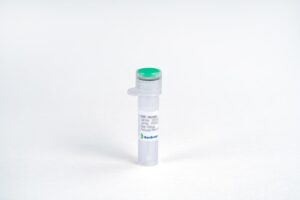
CD96, His, Human
$1,293.75 Add to cart View Product DetailsCD96 (Cluster of Differentiation 96), also known as Tactile (T cell activation, increased late expression), is a receptor protein which is expressed on T cells and NK cells and shares sequence similarity with CD226 (also known as DNAM-1). The main ligand of CD96 is CD155 and CD96 competes with CD226 for binding to CD155. This protein belongs to the immunoglobulin superfamily and may play a role in the adhesive interactions of activated T and NK cells during the late phase of the immune response. It may also promote NK cell-target adhesion by interacting with PVR present on target cells and function in antigen presentation.
-

CD96, His, Human
$189.75 Add to cart View Product DetailsCD96 (Cluster of Differentiation 96), also known as Tactile (T cell activation, increased late expression), is a receptor protein which is expressed on T cells and NK cells and shares sequence similarity with CD226 (also known as DNAM-1). The main ligand of CD96 is CD155 and CD96 competes with CD226 for binding to CD155. This protein belongs to the immunoglobulin superfamily and may play a role in the adhesive interactions of activated T and NK cells during the late phase of the immune response. It may also promote NK cell-target adhesion by interacting with PVR present on target cells and function in antigen presentation.
-

CD96, His, Human
$137.14 Add to cart View Product DetailsCD96 (Cluster of Differentiation 96), also known as Tactile (T cell activation, increased late expression), is a receptor protein which is expressed on T cells and NK cells and shares sequence similarity with CD226 (also known as DNAM-1). The main ligand of CD96 is CD155 and CD96 competes with CD226 for binding to CD155. This protein belongs to the immunoglobulin superfamily and may play a role in the adhesive interactions of activated T and NK cells during the late phase of the immune response. It may also promote NK cell-target adhesion by interacting with PVR present on target cells and function in antigen presentation.
-
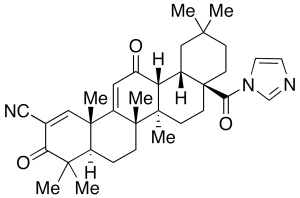
CDDO Imidazolide
$384.68 Add to cart View Product DetailsMolecular Formula : C34H43N3O3
-

CDDO Imidazolide
$3,045.49 Add to cart View Product DetailsMolecular Formula : C34H43N3O3
-
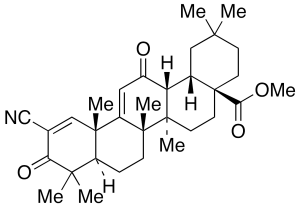
CDDO Methyl Ester
$56.93 Add to cart View Product DetailsMolecular Formula : C32 H43 N O4
-

CDDO Methyl Ester
$106.09 Add to cart View Product DetailsMolecular Formula : C32 H43 N O4
-

CDDO Methyl Ester
$389.85 Add to cart View Product DetailsMolecular Formula : C32 H43 N O4
-
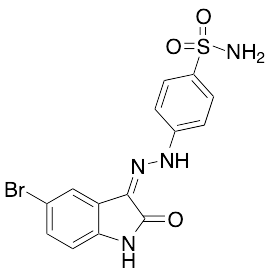
CDK2 inhibitor II
$759.00 Add to cart View Product DetailsMolecular Formula : C14H11BrN4O3S
-
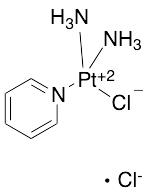
cDPCP
$170.78 Add to cart View Product DetailsMolecular Formula : C5H11ClN3Pt . Cl
-

cDPCP
$622.73 Add to cart View Product DetailsMolecular Formula : C5H11ClN3Pt . Cl
-

cDPCP
$1,338.60 Add to cart View Product DetailsMolecular Formula : C5H11ClN3Pt . Cl
-

CEA (RC66), mAb, Mouse
$104.36 Add to cart View Product DetailsCarcinoembroyonic antigen (CEA) is a glycoprotein, produced during the embryonic and fetal period. The high concentration of CEA in blood are observed in many patients with cancer of the lung, liver, pancreas, breast, colon and prostate. The elevated CEA levels are related to the stage of the disease.
-

CEA (RC66), mAb, Mouse
$1,043.63 Add to cart View Product DetailsCarcinoembroyonic antigen (CEA) is a glycoprotein, produced during the embryonic and fetal period. The high concentration of CEA in blood are observed in many patients with cancer of the lung, liver, pancreas, breast, colon and prostate. The elevated CEA levels are related to the stage of the disease.
-

CEA (RC66), mAb, Mouse
$8,883.75 Add to cart View Product DetailsCarcinoembroyonic antigen (CEA) is a glycoprotein, produced during the embryonic and fetal period. The high concentration of CEA in blood are observed in many patients with cancer of the lung, liver, pancreas, breast, colon and prostate. The elevated CEA levels are related to the stage of the disease.
-

CEA (RC67), mAb, Mouse
$104.36 Add to cart View Product DetailsCarcinoembroyonic antigen (CEA) is a glycoprotein, produced during the embryonic and fetal period. The high concentration of CEA in blood are observed in many patients with cancer of the lung, liver, pancreas, breast, colon and prostate. The elevated CEA levels are related to the stage of the disease.
-

CEA (RC67), mAb, Mouse
$1,043.63 Add to cart View Product DetailsCarcinoembroyonic antigen (CEA) is a glycoprotein, produced during the embryonic and fetal period. The high concentration of CEA in blood are observed in many patients with cancer of the lung, liver, pancreas, breast, colon and prostate. The elevated CEA levels are related to the stage of the disease.
-

CEA (RC67), mAb, Mouse
$8,883.75 Add to cart View Product DetailsCarcinoembroyonic antigen (CEA) is a glycoprotein, produced during the embryonic and fetal period. The high concentration of CEA in blood are observed in many patients with cancer of the lung, liver, pancreas, breast, colon and prostate. The elevated CEA levels are related to the stage of the disease.
-

CEA Fc chimera, Human
$1,293.75 Add to cart View Product DetailsCarcinoembryonic antigen (CEA) also known as Carcinoembryonic antigen-related cell adhesion molecule 5 (CEACAM5), CD antigen CD66e, Meconium antigen 100, is an oncofetal glycoprotein that is normally expressed by mucosal cells. CEA is a member of the immunoglobulin (Ig) superfamily of proteins. CEA is a glycophosphatidylinositol- (GPI-) linked membrane-anchoring protein that is exposed to the cell surface that faces the extracellular matrix. The membrane-anchoring region of CEA can be cleaved by phospholipase C and phospholipase D. The cleaved products are soluble and circulating through blood vessels. Thus, CEA can be present as secreted and cell surface-anchored forms. CEA is functionally associated with cellular interaction, cell adhesion, immune response, anoikis resistance, and promotion of liver metastasis. CEA overexpression is associated with many types of cancers including gastrointestinal, respiratory, and genitourinary system and breast cancers.
-

CEA Fc chimera, Human
$194.06 Add to cart View Product DetailsCarcinoembryonic antigen (CEA) also known as Carcinoembryonic antigen-related cell adhesion molecule 5 (CEACAM5), CD antigen CD66e, Meconium antigen 100, is an oncofetal glycoprotein that is normally expressed by mucosal cells. CEA is a member of the immunoglobulin (Ig) superfamily of proteins. CEA is a glycophosphatidylinositol- (GPI-) linked membrane-anchoring protein that is exposed to the cell surface that faces the extracellular matrix. The membrane-anchoring region of CEA can be cleaved by phospholipase C and phospholipase D. The cleaved products are soluble and circulating through blood vessels. Thus, CEA can be present as secreted and cell surface-anchored forms. CEA is functionally associated with cellular interaction, cell adhesion, immune response, anoikis resistance, and promotion of liver metastasis. CEA overexpression is associated with many types of cancers including gastrointestinal, respiratory, and genitourinary system and breast cancers.
-

CEA Fc chimera, Human
$138.00 Add to cart View Product DetailsCarcinoembryonic antigen (CEA) also known as Carcinoembryonic antigen-related cell adhesion molecule 5 (CEACAM5), CD antigen CD66e, Meconium antigen 100, is an oncofetal glycoprotein that is normally expressed by mucosal cells. CEA is a member of the immunoglobulin (Ig) superfamily of proteins. CEA is a glycophosphatidylinositol- (GPI-) linked membrane-anchoring protein that is exposed to the cell surface that faces the extracellular matrix. The membrane-anchoring region of CEA can be cleaved by phospholipase C and phospholipase D. The cleaved products are soluble and circulating through blood vessels. Thus, CEA can be present as secreted and cell surface-anchored forms. CEA is functionally associated with cellular interaction, cell adhesion, immune response, anoikis resistance, and promotion of liver metastasis. CEA overexpression is associated with many types of cancers including gastrointestinal, respiratory, and genitourinary system and breast cancers.
-

CEA, His, Human
$1,293.75 Add to cart View Product DetailsCarcinoembryonic antigen (CEA) also known as Carcinoembryonic antigen-related cell adhesion molecule 5 (CEACAM5), CD antigen CD66e, Meconium antigen 100, is an oncofetal glycoprotein that is normally expressed by mucosal cells. CEA is a member of the immunoglobulin (Ig) superfamily of proteins. CEA is a glycophosphatidylinositol- (GPI-) linked membrane-anchoring protein that is exposed to the cell surface that faces the extracellular matrix. The membrane-anchoring region of CEA can be cleaved by phospholipase C and phospholipase D. The cleaved products are soluble and circulating through blood vessels. Thus, CEA can be present as secreted and cell surface-anchored forms. CEA is functionally associated with cellular interaction, cell adhesion, immune response, anoikis resistance, and promotion of liver metastasis. CEA overexpression is associated with many types of cancers including gastrointestinal, respiratory, and genitourinary system and breast cancers.
-

CEA, His, Human
$194.06 Add to cart View Product DetailsCarcinoembryonic antigen (CEA) also known as Carcinoembryonic antigen-related cell adhesion molecule 5 (CEACAM5), CD antigen CD66e, Meconium antigen 100, is an oncofetal glycoprotein that is normally expressed by mucosal cells. CEA is a member of the immunoglobulin (Ig) superfamily of proteins. CEA is a glycophosphatidylinositol- (GPI-) linked membrane-anchoring protein that is exposed to the cell surface that faces the extracellular matrix. The membrane-anchoring region of CEA can be cleaved by phospholipase C and phospholipase D. The cleaved products are soluble and circulating through blood vessels. Thus, CEA can be present as secreted and cell surface-anchored forms. CEA is functionally associated with cellular interaction, cell adhesion, immune response, anoikis resistance, and promotion of liver metastasis. CEA overexpression is associated with many types of cancers including gastrointestinal, respiratory, and genitourinary system and breast cancers.
-

CEA, His, Human
$138.00 Add to cart View Product DetailsCarcinoembryonic antigen (CEA) also known as Carcinoembryonic antigen-related cell adhesion molecule 5 (CEACAM5), CD antigen CD66e, Meconium antigen 100, is an oncofetal glycoprotein that is normally expressed by mucosal cells. CEA is a member of the immunoglobulin (Ig) superfamily of proteins. CEA is a glycophosphatidylinositol- (GPI-) linked membrane-anchoring protein that is exposed to the cell surface that faces the extracellular matrix. The membrane-anchoring region of CEA can be cleaved by phospholipase C and phospholipase D. The cleaved products are soluble and circulating through blood vessels. Thus, CEA can be present as secreted and cell surface-anchored forms. CEA is functionally associated with cellular interaction, cell adhesion, immune response, anoikis resistance, and promotion of liver metastasis. CEA overexpression is associated with many types of cancers including gastrointestinal, respiratory, and genitourinary system and breast cancers.
-
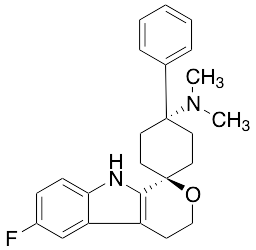
Cebranopadol
$286.35 Add to cart View Product DetailsMolecular Formula : C24H27FN2O
-
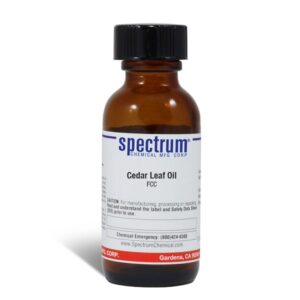
Cedar Leaf Oil, FCC
$132.64 Add to cart View Product DetailsCedar Leaf Oil, FCC
-
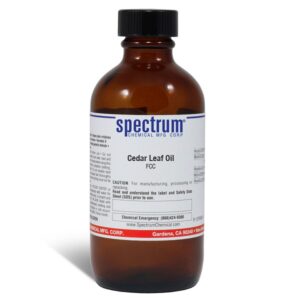
Cedar Leaf Oil, FCC
$185.68 Add to cart View Product DetailsCedar Leaf Oil, FCC
-
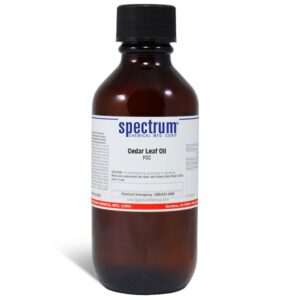
Cedar Leaf Oil, FCC
$648.52 Add to cart View Product DetailsCedar Leaf Oil, FCC
-
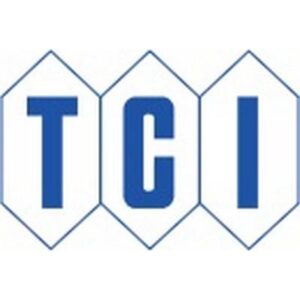
Cedar Oil
$32.81 Add to cart View Product DetailsCedar Oil
-

Cedar Oil
$75.70 Add to cart View Product DetailsCedar Oil
-

Cedar Oil
$222.05 Add to cart View Product DetailsCedar Oil
-
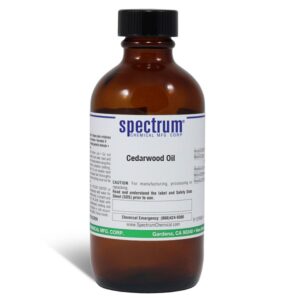
Cedarwood Oil
$79.57 Add to cart View Product DetailsCedarwood Oil
-
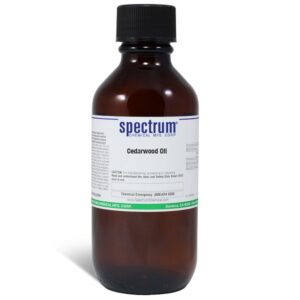
Cedarwood Oil
$252.68 Add to cart View Product DetailsCedarwood Oil
-
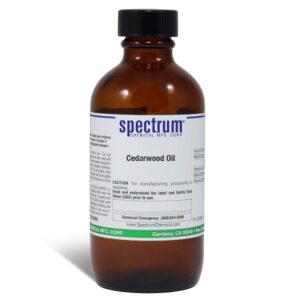
Cedarwood Oil
$84.26 Add to cart View Product DetailsCedarwood Oil
-
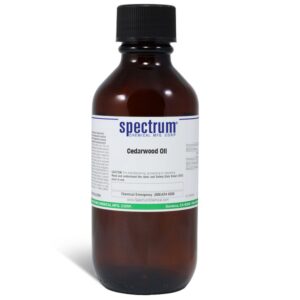
Cedarwood Oil
$245.08 Add to cart View Product DetailsCedarwood Oil
-
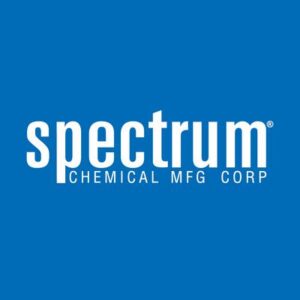
Cedarwood Oil
$2,288.59 Add to cart View Product DetailsCedarwood Oil
-
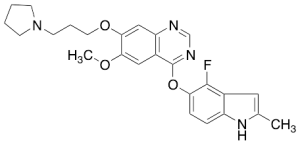
Cediranib
$70.73 Add to cart View Product DetailsMolecular Formula : C25H27FN4O3
-

Cediranib
$106.09 Add to cart View Product DetailsMolecular Formula : C25H27FN4O3
-

Cediranib
$564.94 Add to cart View Product DetailsMolecular Formula : C25H27FN4O3
-
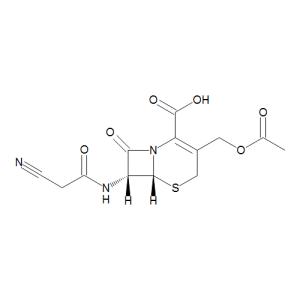
Cefacetrile
$125.06 Add to cart View Product DetailsMolecular Formula : C13 H13 N3 O6 S


